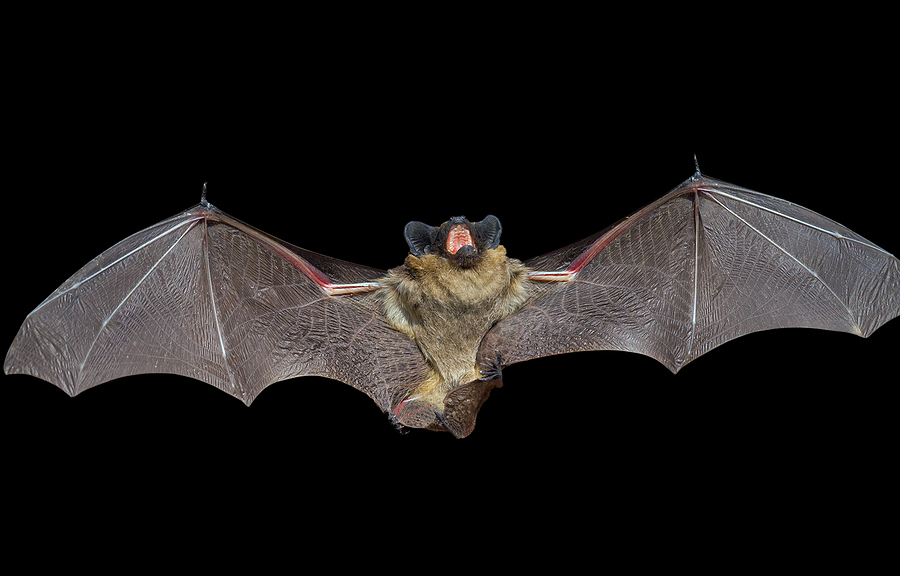Bats, often regarded as nightmarish creatures in popular media, can turn into a homeowner’s real-life horror story when they take shelter within our homes. With their silent flight and preference for dark, secluded spaces, bats are skilled at finding their way into unassuming homes, where they pose not only an inconvenience but potential health risks as well. In this comprehensive guide, we’ll explore how to keep your home bat-free and your family safe.

Understanding Bat Behavior and Habitats
Before jumping into prevention tactics, it’s essential to understand bats. Contrary to their portrayal in horror movies, bats are not aggressive toward humans. They generally want to be left undisturbed in their preferred roosts, which are typically in quiet, dark spaces that mimic their cave-dwelling habitats.
Discovering Where Bats Lurk
Bats often roost in attics, wall voids, and other quiet, warm areas of a house. In warmer months, they might squeeze through small cracks and crevices to access these spaces, attracted to the comfort and safety they provide. To protect your home, you must understand the locations bats find appealing and what draws them in.
The Key to Keeping Bats at Bay
One of the main factors drawing bats to homes is the availability of food sources near their roosts. This could mean insects swarming around outdoor lights near the entry points bats use to get inside. By removing these attractions, you make your home a far less appealing destination.
Signs of a Bat Infestation
Recognizing the presence of bats in your home is the critical first step towards resolving the issue. Here’s how you can detect their presence and distinguish it from other pests.
Visible Sighting and Distinguishing Bat Activity
Directly seeing bats inside your home is an obvious sign of an infestation, but during the day, they’ll likely be roosting. Look for signs of bat guano, which can accumulate in piles near entry points or their roost, and listen for scratching or squeaking, which can indicate their activity during dusk and dawn.
Identifying Bat Guano and Associated Health Risks
Bat droppings can accumulate in your home’s corners, near walls, or under rafters. It’s crucial to identify and differentiate bat guano from other animal droppings as it poses a potential risk for a disease called histoplasmosis, especially if inhaled when cleaning up.
Safely Removing Bats from Your Home
Once you’ve confirmed a bat infestation, the next step is to take action, ensuring both the safety of your family and the welfare of the bats.
The Human Approach to Bat Relocation
It’s essential to handle bat removal humanely. Closing off their entry points when they’re not actively using them to roost is one effective method. This practice, called exclusion, often involves installing a one-way device near the bats’ entry which allows them to leave but not return.
DIY Removal Techniques
While some home remedies claim to eradicate bats, they can be unreliable and unsafe. Using repellents can drive bats deeper into your home or pose a smell and pollution hazard. Instead, focus on preventative measures against re-entry.
Bat Proofing Techniques
The key to long-term bat control is prevention. Implement these measures to stop bats from reentering your home.
The Integrity of Your Home as a Defense
Sealing any visible entry points is a straightforward way to prevent bats (and other unwanted critters) from entering your home. Pay close attention to areas around the roof, attic vents, and chimney, as these are common entry pathways for bats.
Habitat Modification
Consider how you can make the area around your home less hospitable for bats. Reducing moisture around the house, especially close to potential entry points, can deter bats seeking to prevent dehydration. Outdoor lighting can also be a deterrent by drawing insects away from your home.
When to Seek Professional Bat Removal and Control
In some cases, a bat infestation requires the expertise of a professional. When do-it-yourself methods fail, or if the infestation is too large to manage on your own, it’s time to call in the experts.
Choosing the Right Bat Removal Service
A reputable pest control service will have experience in humane bat removal, will understand the laws and regulations in your area regarding wildlife management, and can help you ensure the safety and health of your family and the bats.
Evaluating the Severity of the Infestation
Professional pest control services will assess the severity of a bat infestation and recommend the best course of action. They will help you with cleanup and repair after the bats have been removed, and provide guidance on how to prevent future infestations.
The Timeliness of Bat Removal
Delaying the removal of bats from your home can lead to further complications. Bats reproduce rapidly, so an infestation can grow quickly. Additionally, guano buildup can damage your home’s structure and pose health risks, making timely removal important.
In Conclusion
Bat infestations are a serious problem for homeowners. Understanding bat behavior, detecting their presence, and implementing humane measures to remove and prevent them are crucial steps to safeguard your home and family. By taking proactive steps and seeking professional assistance when needed, you can effectively manage bat infestations and ensure a safe, healthy living environment.
Have you encountered a bat infestation in your home? Contact Budget Animal Removal at 317-875-3099 for DNR licensed and insured bat removal and control services in Indianapolis and its surrounding counties. We guarantee to fit your budget for safe wildlife control. Request a free estimate or advice, today!
Related Posts:
FAQS About Bats in the House
The Importance of Humane Bat Removal and Control
Need Bat Removal? Here’s What You Need to Know
